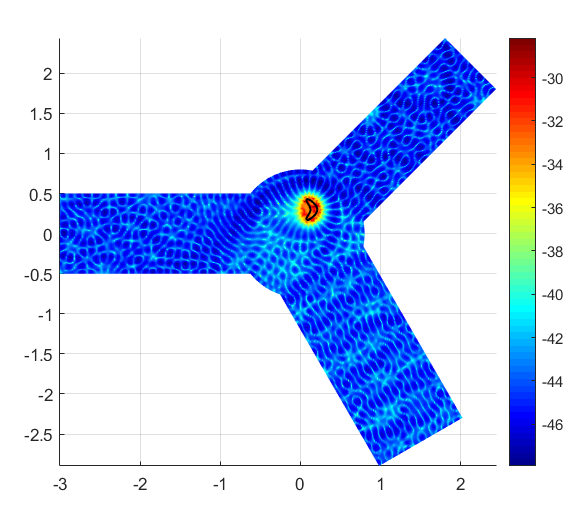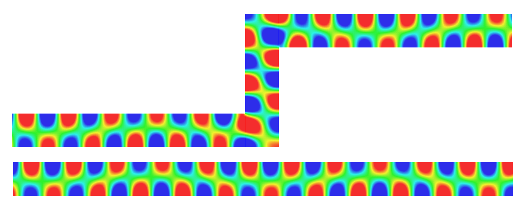Inverse Problems, invisibility and optimization

The field of inverse problems is an important part of our activity. Given the strong expertise of POEMS in the fields of modeling and simulation of waves, most of the inverse problems we are interested in concern inverse scattering. Invisibility and optimization are quite recent activities which can be considered as connected to inverse problems.
The first axis of inverse problems concerns sampling methods in elongated structures, called waveguides, both in acoustics and elasticity. In the context of Non-Destructive-Testing, our aim is to detect some defects in waveguides, junctions of waveguides or waveguides which are partially embedded in a surrounding medium. We have in particular validated the Linear Sampling Method in an experimental and realistic ultrasonic NDT context. The sampling methods consist in testing if some point describing a sampling grid belong to the defect or not by solving a small system depending only on multistatic data.
The second axis of inverse problems concerns the notion of mixed formulations of the Tikhonov regularization, which has connections with the old concept of quasi-reversibility and is intended to regularize ill-posed PDEs. Essentially, our mixed formulations enable us to adapt this concept to a friendly Finite Element Method context using simple conforming elements while remaining compatible with the Morozov's principle to specify the regularization parameter. Coupled with a level set technique, they also enable us to solve inverse obstacle problems with the help of a single pair of Cauchy data.

A third axis concerns invisibility in waveguides. There are two objectives. On the one hand, we wish to build obstacles that are non-reflecting, or even perfectly invisible, for given incident waves. On the other hand, if the obstacle is given, we look for frequencies where no-reflection occurs, for some incident waves, such problem being connected with the so-called interior transmission eigenvalue problem.
The fourth axis is the concept of topological derivative, which quantifies the perturbation induced to a given cost functional by the nucleation of an infinitesimal flaw in a reference acoustic or elastic body. This concept, known to be effective as a sampling tool for wave-based identification of finite-sized objects, has been partially justified from a mathematical point of view. Is is both a NDT complementary method and a potentially useful tool for designing periodic media.
The fifth axis is PDE-constrained optimization methods. This includes imaging using energy functionals based on an error in constitutive equation, topology optimization using the concept of adaptive eigenspace bases, and boundary integral equation approaches of shape optimization problems in the context of fluid mechanics.



